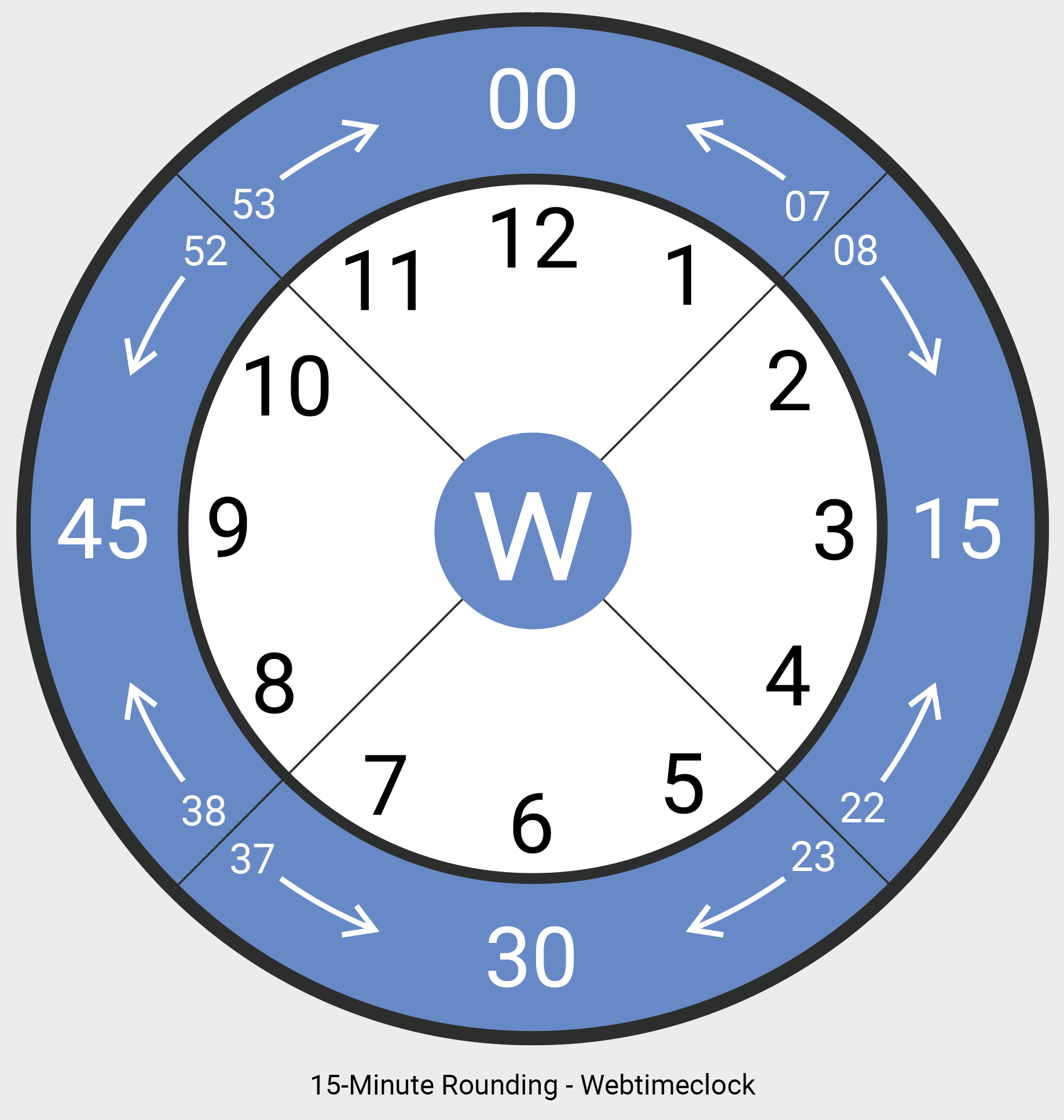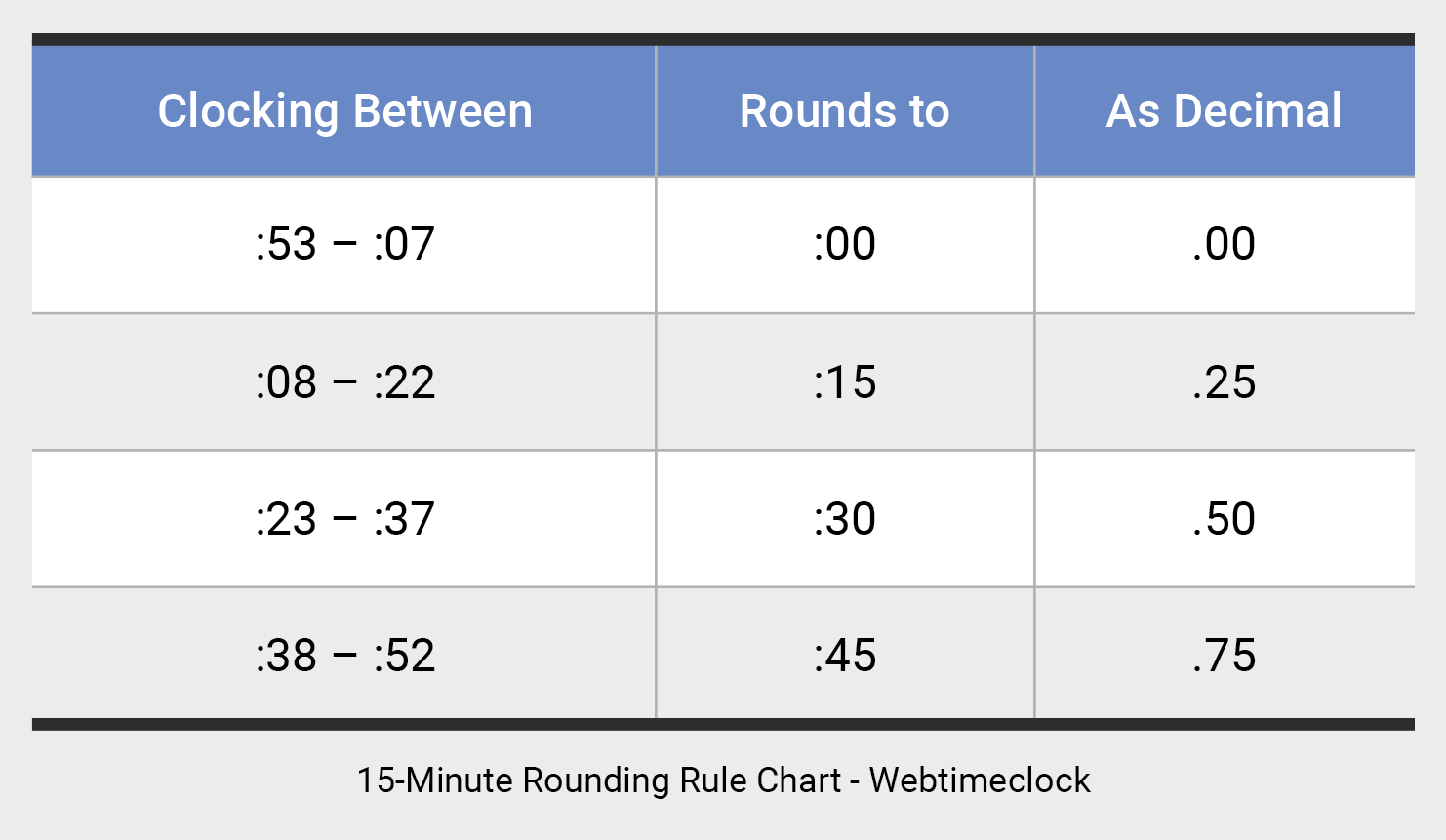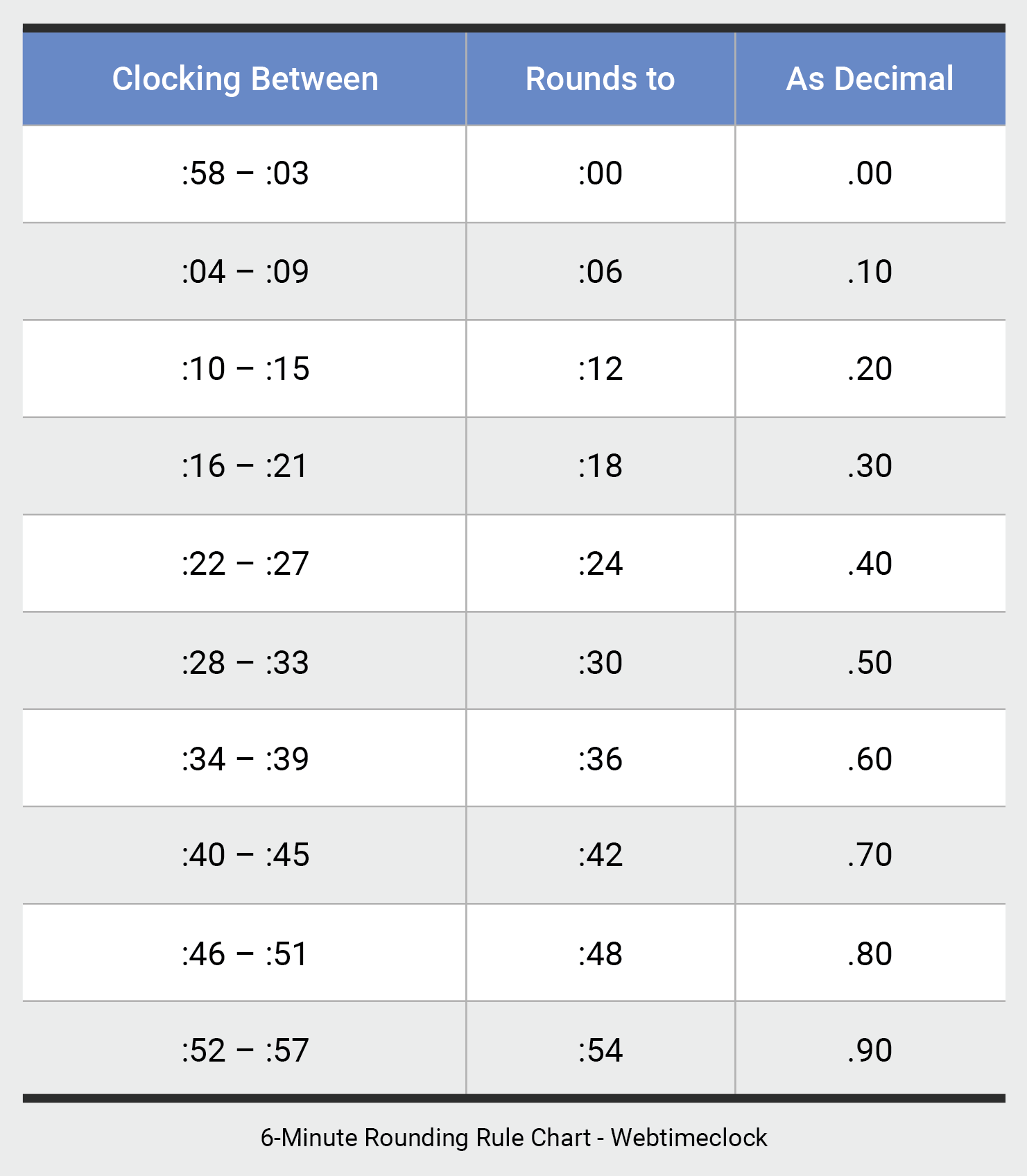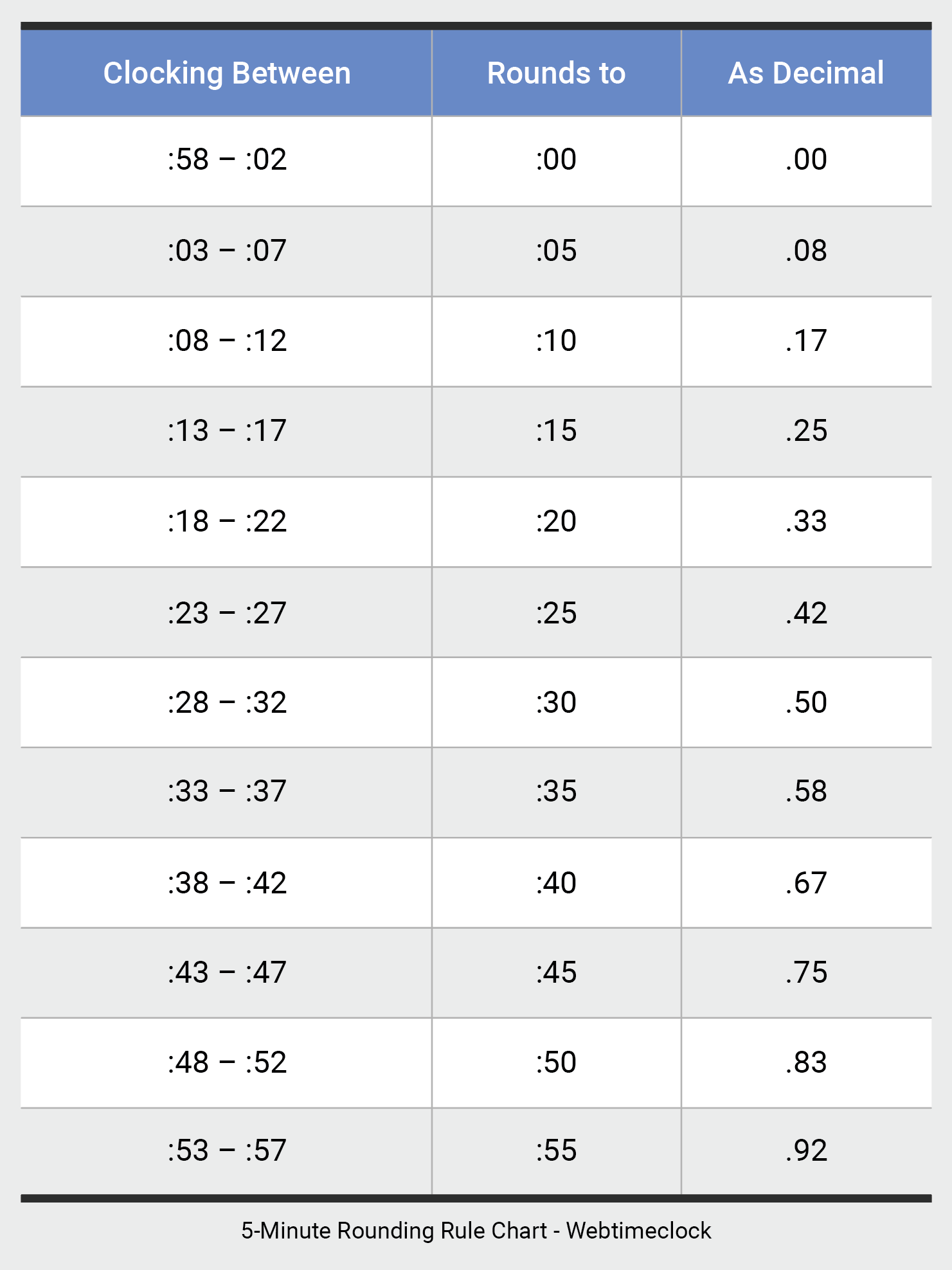Time Clock Rounding and How it Works
Until the arrival of time clock software, tracking employee hours was not an exact science. Hourly employees in manufacturing would line up in front of a time clock machine waiting for their shift to start.
One by one they would clock in, and depending on how the long the line was, the employees at the end of the line were late.
The challenge for the employer was how to calculate those hours. Time clock rounding was a means of keeping calculations efficient, consistent, while ensuring employees were paid fairly.
But technology has changed, and the truth is you don't need time clock rounding anymore. But we won't say you shouldn't.
This article will help employers gain a better understanding of time clock rounding for their business. Here is what we cover...
- What is time clock rounding?
- Common rounding rules
- Time clock rounding charts
- Is time clock rounding legal?
- When you should use time clock rounding
- Why you shouldn't use time clock rounding
- Conclusion
What is time clock rounding?
Time clock rounding is a method of simplifying hour calculations for payroll. It replaces the exact time an employee clocks time to the nearest percentage of an hour, such as quarter hour, or tenth of an hour. With a 15-minute rule, a time entry of 7:53 AM is rounded to 8:00 AM, the nearest quarter hour.
Rounding specifies how employees are compensated. If employees should be paid in 15-minute increments, using a 15-minute rounding rule will calculate total hours to that specification.
Rounding can also used to help prevent the accumulation of unauthorized hours and overtime, by shaving off early and late punches.
Common rounding rules
Depending on business needs, there are several different types. Here are few commonly used time clock rounding rules.
15-minute rounding rule
Rounds each time entry to the nearest quarter hour with an 8-minute breakpoint. For example, any time entry between 7:53 AM and 8:07 AM will round to 8:00 AM.
6-minute rounding rule
Rounds each time entry to the nearest tenth of an hour with a 3-minute breakpoint. For example, any time entry between 7:57 AM and 8:02 AM will round to 8:00 AM.
5-minute rounding rule
Rounds each punch to the nearest twelfth of an hour with a 3-minute breakpoint. For example, any time entry between 7:58 AM and 8:02 AM will round to 8:00 AM.
Breakpoint rule
Rounding time is sometimes referred as "up and down". The breakpoint is where the rounded time moves forward (up) or backwards (down). Typically, the halfway point, but some systems have allowed this to be modified.
7/8-minute rounding rule
Another way of describing the 15-minute rule. The 7/8 rule moves the time down at the 7-minute mark. It moves time up at the 8-minute mark. For example, a punch at 8:07 AM rounds down to 8:00 AM. A punch at 8:08 AM rounds up to 8:15 AM.
Neutral rounding rule
Rounds both the clock in time and clock out time the same way. It helps ensure the employer does not benefit from the policy and the employee is not deprived of wages over time.
Docking rounding rule
Rounds differently for the in time and out time. For example, a 15-minute rule for the clock in, but a 5-minute rule for the clock out. Essentially docking the employee if they are late.
Time clock rounding charts
Below is a graphic for a 15-minute rounding rule with an 8-minute breakpoint. The crossed lines mark where time is rounded either up or down.
For example, any time entry that falls 8 minutes after the hour is rounded up to 15 minutes after the hour.
Conversely, any time entry that falls 22 minutes after the hour is rounded down to 15 minutes after the hour.

Below is a table for a 15-minute rounding rule with a 8-minute breakpoint. Any time entry that falls between 8 and 22 minutes after the hour is rounded to 15 minutes after the hour. Which converts to .25 hundredths of an hour.

Below is a table for a 6-minute rounding rule with a 3-minute breakpoint. Any time entry that falls between 4 and 9 minutes after the hour is rounded to 6 minutes after the hour. Which converts to .10 hundredths of an hour.

Below is a table for a 5-minute rounding rule with a 3-minute breakpoint. Any time entry that falls between 3 and 7 minutes after the hour is rounded to 5 minutes after the hour. Which converts to .08 hundredths of an hour.

Is time clock rounding legal?
Yes, it is legal, providing the policy is fair to employees.
As a specific example, California legal actions are showing a trend to possibly prohibit rounding policies entirely. If interested, read California Time Rounding Policies – The Beginning of the End?
The underlying premise is this. Employers are required to pay employees for every minute worked, it makes sense that time is also tracked to the minute. With more accurate online time clock systems, it's increasingly difficult to justify why rounding policies should be used. Especially if proven unfair.
To be clear, it is still legal in California to use neutral rounding policies, that is, if those polices do not ultimately benefit the employer. Court actions occur when employees prove they were short changed by those polices.
When you should use time clock rounding
1. You don't pay to the exact minute.
Instead, for administrative reasons, you pay to the quarter hour, or tenth of an hour. As a way to simplify processing.
If you use a traditional time clock, this can make sense. The process is not perfectly exact, and the task of totaling the hours can be time consuming. Using rounding rules can make adding payroll hours easier.
But if you use an online time clock app, the above is handled for you. Time entries are instant, and time calculation is accurate. And since hourly employees should be paid for every minute they work, you might consider not using rounding rules at all.
2. To help control unauthorized hours and overtime.
Employees are people, they won't always clock at the exact time each day.
Rounding helps to overcome the issue of early or late clocking and can allow for calculations more in line with their authorized schedule.
Although controlling unauthorized hours is a purpose of using rounding, there are pitfalls. We'll discuss that below.
Tip, if an employee timesheet consistently shows the same time entries, an auditor will see that as a red flag and think the employee is not clocking in.
Why you should NOT use time clock rounding
1. Time theft.
Left unchecked, employees can take advantage.
Let's say you use a 15-minute time clock rounding rule, and let's say employees start at 8:00 AM and leave at 4:00 PM.
If an employee clocks in every day at 8:07 AM (which rounds to 8:00 AM) and leaves every day at 3:53 PM (which rounds to 4:00 PM), that's 14 minutes of pay they did not work. If you multiply that by 5 days, it becomes 1 hour and 10 minutes per week. Multiply that by 52 weeks it becomes 60 hours and 40 minutes.
If that employee is paid $25 per hour. Your potential loss is $1,517 over the year.
2. It's not necessary anymore.
Payroll for hourly employees does not require rounded hours. It never has. It was a convenient method used by employers to help administrative tasks.
As mentioned, if you use a web-based time clock system, everything is handled for you. Employees don't have to wait in line, they can simply clock in using their phone or office computer. And the software already calculates everything.
By not using time clock rounding rules, you are ensuring employees get paid only when they are on the clock. Not when they try to bend the rules.
Further, you are ensuring that everyone is treated fairly. Both for you the employer and your employees.
Conclusion
Time clock rounding policies are a helpful way of simplifying payroll hours. Still used by many businesses today. If you use a traditional time clock, it makes sense to leverage rounding rules. It can work fine providing it is fair to your employees, and no one sets to abuse it.
But if you use a time clock system, such as Webtimeclock, you really don't need it. No lines of employees waiting to clock in, and the software calculates everything right down to the exact minute.
Further, laws are starting to push against these kinds of policies too. Employees need to be paid for every minute they work. If you make sure employees get their full breaks, and don't use rounding, staying compliant is much easier.